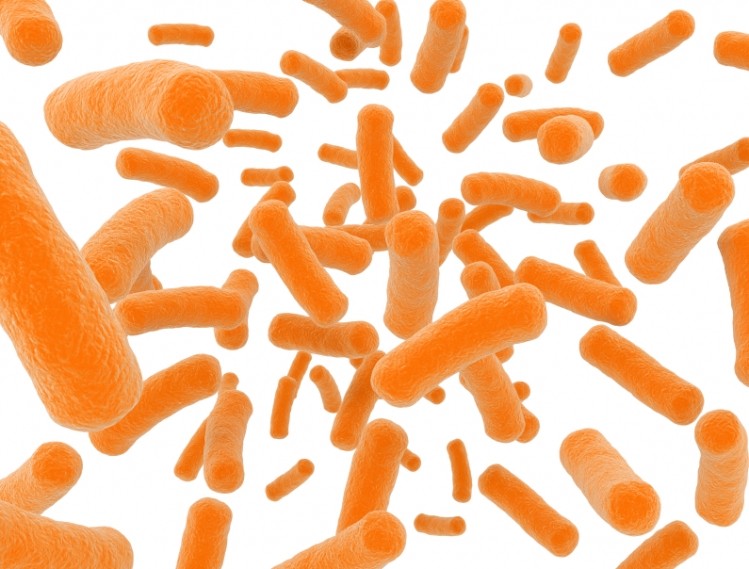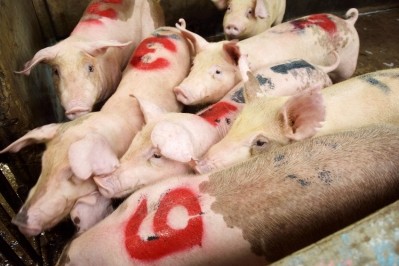Little studied probiotic strains may boost piglet weight gain and promote gut health

“Further animal trials showed that administration of these two probiotic strains could improve the growth performance and intestinal microflora in weaned piglets,” reported the scientists. “This study provides evidences for two novel indigenous strains, L. johnsonii x-1d-2 and L. mucosae x-4w-1, which have high potential to be used as feed additives in the pig industry.”
The researchers looked at the effect of the two different probiotic strains on body weight gain, feed intake, and the gain to feed ratio of piglets, along with the amount of lactobacilli and E.coli present in their faeces.
Probiotic and growth medium selection
The two probiotic strains were selected for study because they have not been thoroughly tested previously said the group, comprised of members from Kainan University, Tungnan University, the Council of Agriculture and the National Taiwan University.
L. johnsonii has been somewhat explored as a probiotic for livestock and poultry and no studies had been done using L. mucosae for animal production, they said.
Both can be found in piglet faeces and have been previously associated with epithelial attachment, pathogen inhibition and the intestinal immune response, said the team.
Study results on piglets
The experiment involved 24 crossbred piglets randomly assigned to one of four groups. Each set received a basal diet predominantly comprised of corn, soybean meal and fish meal with additives like calcium carbonate, salt, mineral premix and vitamin premix. However, three groups received a probiotic supplement – freeze-dried L. mucosae, freeze-dried L. johnsonii or both probiotics.
Body weight gain (BWG), feed intake, the gain to feed ratio and faecal flora were measured at several intervals during the study.
The pigs that saw the most growth were eating the L. mucosae probiotic, scientists reported.
Those animals moved from an initial BW of 6.65 kg to 16.81 kg. The control group piglets grew the least going from 6.8 kg to 12.79 kg.
Piglets getting the L. mucosae supplement also saw the best feed efficiency, researchers said.
“These results showed that addition of L. johnsonii x-1d-2 and L. mucosae x-4w-1 to the basal diet improved the growth performance of weaned piglets,” said group members.
All three sets of piglets receiving a probiotic showed an increase in the amount of lactobacilli in their faeces, with the group getting the L. mucosae supplement seeing the largest bump in numbers. Additionally, the animals getting L. johnsonii saw the largest decrease in the amount of E. coli found.
The number of lactobacilli in the control group’s faeces remained fairly steady, with counts starting at 6.20 log CFU/g and ending at 6.17 log CFU/g, said the research team. However, the amount of E. coli increased. The control piglets were the only ones that had that occur.
“The results suggested that the improvement of weaned piglet growth performance might likely be the effect of L. johnsonii x-1d-2 and L. mucosae x-4w-1 on the intestinal microbial ecosystem,” scientists said. “It is worth noting that weaned piglets fed with L. mucosae x-4w-1 showed the best growth performance and greatest number of lactobacilli among the probiotic treatments.”
Cost-effective probiotic growth medium
Additionally, soybean meal, molasses and sodium acetate may offer the pig industry a growth medium that is cheaper than current commercial options, said the group of Taiwanese researchers.
“We successfully developed a low-cost medium for mass production of Lactobacillus johnsonii x-1d-2 and Lactobacillus mucosae x-4w-1 isolated from piglet faeces,” the scientists said.
Reportedly, the growth medium cost was approximately 96% less expensive than a comparable commercial option.
Research was done to determine the best amounts of the three main ingredients in the growth medium – soybean meal, molasses and sodium acetate. The team reported the estimated best medium was found to be 5.5% (wt/vol) soymeal, 1% (wt/vol) molasses and 1% (wt/vol) sodium acetate.
Several nitrogen and carbon sources were considered, said the researchers but the materials selected were found to be both effective and economical. The sodium acetate was added to further prompt growth of the probiotic strains.
Source: Asian-Australasian Journal of Animal Sciences
Published online ahead of print:DOI: http://dx.doi.org/10.5713/ajas.14.0780
Title: Optimizing Production of Two Potential Probiotic Lactobacilli Strains Isolated from Piglet Faeces as Feed Additives for Weaned Piglets
Authors: M-L Chiang, H-C Chen, K-N Chen, Y-C Lin, Y-T Lin, M-J Chen












